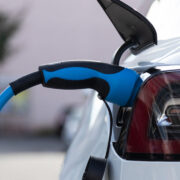With a slew of new incentives and rebates cropping up in states across the US to promote the purchase of electric bicycles, or e-bikes, it could be a good time to consider making some trips on two wheels instead of four.
While the Inflation Reduction Act passed by Congress earlier this year notably left out the electric bike tax credit and other bike-related provisions, state and municipal legislatures have taken up the e-bike mantle. According to this online tracker developed by Portland State University, at least 17 states have either proposed or are currently offering some form of incentive for e-bike purchases, with many of those discounts being funded at the local level.1
The benefits of electric bikes are many and multi-faceted. E-bikes, which are equipped with a small electric motor to boost pedaling power, enable riders to travel further distances and over more challenging terrain than a conventional bicycle. It’s conceivable, then, that with the right infrastructure in place, e-bikes could replace cars for a significant portion of trips, thus reducing CO2 emissions.
Transportation alone is responsible for nearly 38% of all US carbon emissions. One 2019 study from the Transportation Research and Education Center concluded that a 15% increase in e-bike usage across the US would reduce transportation-related CO2 emissions by 11%. The study identified an important factor: for every 100 “utilitarian” miles traveled via electric bicycle – in other words, trips that were not primarily for the purposes of recreation or exercise – 72.4 of those miles would have been traveled by car.2
This means that nearly three-quarters of all practical e-bike trips – to the supermarket, the gym, or to visit friends – are taking cars off the road that would have otherwise emitted greenhouse gases. Most of these trips are relatively short. In the US, 55% of all car trips are 5 miles or less, generating 551,940 metric tons of CO2 daily.3 Replacing even a fraction of those car trips with e-bikes would go a long way toward reducing transportation-related emissions.
E-bikes also offer a myriad of other benefits. Owning a car, with expenses for registration, insurance, parking, tolls, fuel, maintenance, and repairs, can get very costly. Only a fraction of these fees applies to e-bikes. Riding an e-bike is also significantly healthier than driving a car, as regular exercise can contribute to better overall physical and mental health. Better personal health leads to better societal health, which may even result in lower healthcare costs. Increased e-bike usage would ease congestion on roadways, improve air quality, and provide a reliable transportation alternative for people in low-income communities and those without access to a car.
Over the last several years, an array of e-bike manufacturers have entered the market offering a variety of options. E-bike models are classified based on the functionality of the electric motor.
* Class 1 “pedal-assisted” e-bikes have a motor that engages only when the rider is pedaling and disengages when the bike reaches 20 mph.
* The motor on Class 2 “throttle-assisted” e-bikes can be engaged by a throttle, independent of pedaling, and also disengages at 20 mph.
* Finally, Class 3 e-bikes are also “pedal-assisted” but can reach speeds of 28 mph. While Class 1 and Class 2 e-bikes can be ridden anywhere a conventional bicycle can, Class 3 e-bikes are restricted from certain paths and trails due to their ability to reach higher speeds.4
Even with incentive programs popping up all over the country, an e-bike of any kind is still a significant investment. Most models start around $1,000 but are often more expensive, with some of the more popular bikes selling for between $2,000-$3,000 and up. Riders that need a bike that can travel longer distances at faster speeds and handle more uneven terrain should expect to pay more.
While wide adoption of e-bikes will require additional investment in infrastructure, including construction of more cycling paths, bike lanes, and charging stations, the benefits are clear. Much of the focus in the electric vehicle space has historically been on electric cars, but considering the short timeline many experts suggest we are facing to fully transition away from fossil fuel-based transportation, e-bikes could play an important role.
Be sure to check out our review of the Rad Runner e-bike.



















Comments